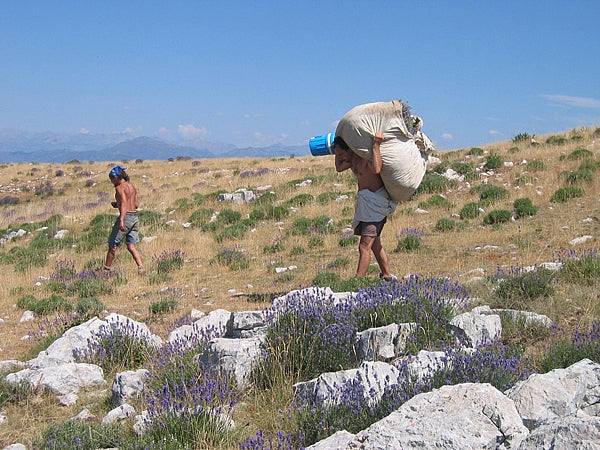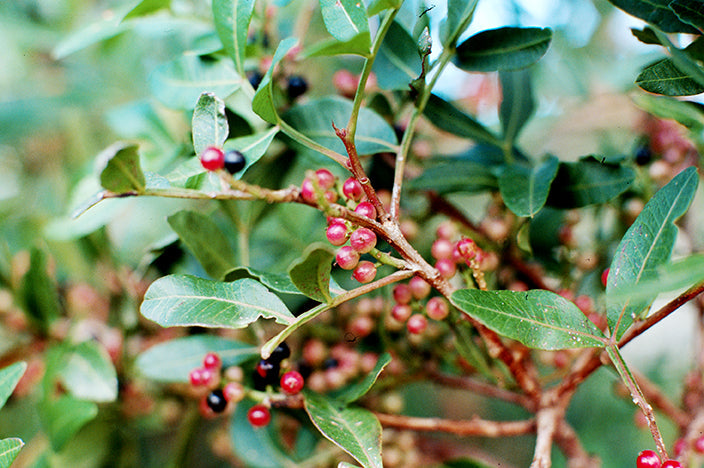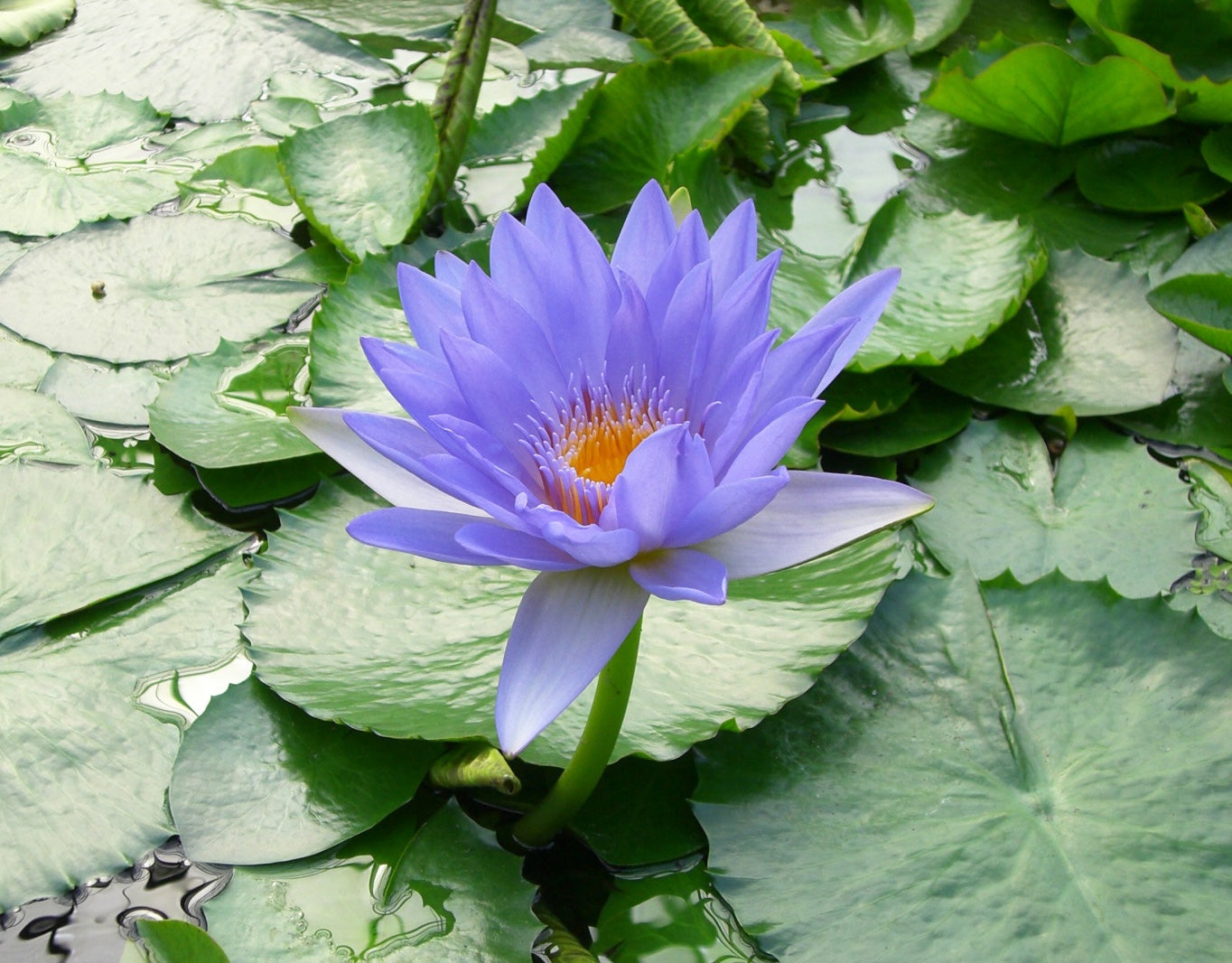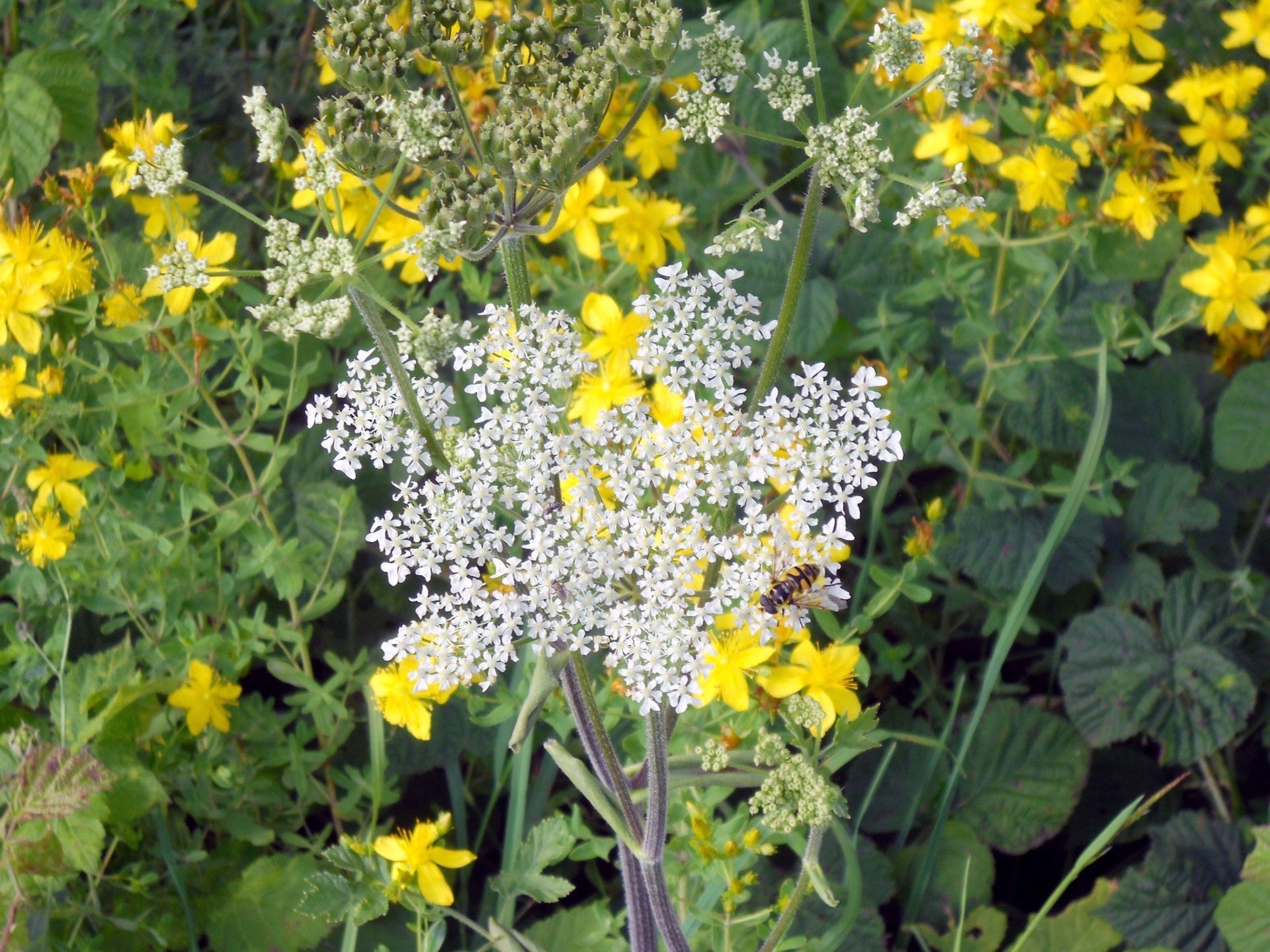Today I would like to draw the kind reader's attention to the arrival of a workhorse aromatic which is, despite it's common character, quite rare in it'sbioauthentic incarnation: Lavender sauvage EO
Most of our customers appreciate the ultra gentle characteristics of the Lavender sauvage essential oil, we have been importing for more than two decades. This Lavender naturally commands the highest price of all the Lavender varieties and is most aromatherapists favorite despite its very veiled and maybe quiet fragrance character.
This Lavender sauvage is classic Provence, exclusively harvested in higher elevations of the Montagne de Lure area situated in the Departement Alpes de Haut Provence. The higher elevations of Provence are home to relatively inclement climates in the wintertime yet the wild Lavender plants survive just fine.
Wild Lavender represents some central aspects of the essence of aromatherapy. If we walk in the higher elevations of the Provencale plateaux and touch a flowering branch the fragrance that transfers to our hands is very faint, reflecting the most balanced and gentle character vested in the composition of this oil.
Lavender sauvage essential oil is much gentler than more outspoken Lavender varieties such as Lavender Maillette. It is almost surprising that in our time, where digital images are routinely oversaturated and perfumes are amped up with piercing synthetics, this gentle oil is cherished by a broad following of connaisseurs.
If true elegance is the avoidance of exaggeration at all cost the wild Lavender is a perfect illustration of this concept, braving adversity as it survives the rough winters in Provence without resorting to drastic measures elegantly persevering in the face of adversity.
Lavender is antispasmodic, sedative, and hypotensive. It eases emotional overload and helps to avoid nightmares. On the physical plane it is especially useful for bedsores and pain related to inflammation of the skin and the locomotor system.
Wild Lavender is harvested abundantly in some years only to be fairly sparse in other years. So it is always wise to stock up when it is in good supply.
Lavender sauvage
For everyone wanting to understand the details associated with the different varieties Lavender oil available on the market place, exploring the history of how Lavender came to be a cash crop in Provence at the beginning of the 20th century is an important first step. Often the price lists of suppliers are not as informative as one would wish. Here is a list of common Lavender oil varieties as they are found from Provencal suppliers.
Original: Wild Lavender (L. angustifolia) volunteering on the high plateau of Provence, generally called “Lavender sauvage.” (our number 175)
Original: Lavender (L. angustifolia) cultivated from seed. Generally referred to as Fine Lavender or Population Lavender (our number 125)
Clones: Lavender (L. angustifolia) propagated by cuttings. For example our Lavender Maillette (our number 5004).
Hybride Lavenders (Lavandula x hybrida), being a cross between Spike Lavender (our number 124) and Fine Lavender, exist as many different cultivars. (for example our Lavandin super, our number 5006 and 5007)
If you are interested in our Lavender collection set please press here: Lavender Authenticity Set
(The detail of all of this is comprehensively presented by Margrit Müller in the Proceedings of the 4th PIA Aromatherapy Conference in the year 2000th.)
Wild Lavender is a capricious plant, at least as far as its availability for essential oil production is concerned. Fine and clonal Lavenders (i.e. Maillette) can be cultivated and harvested with the help of machines. However, the mountainous terrain where the Wild Lavender grows does not lend itself to the use of machines. It must be harvested by hand with sickles and carried down in large sacks of cloth.
Another aspect of its capriciousness is that it does not grow equally prolific each year. Usually a prolific year is followed by two or three years where there is very little Lavender to be gathered.





Share:
Green Myrtle Hydrosol from Corsica
Carrot Seed from France and Bosnia in Herzegovina